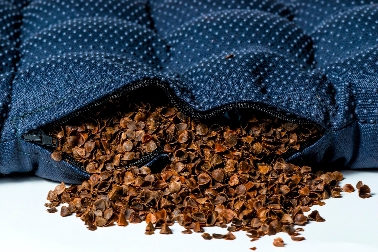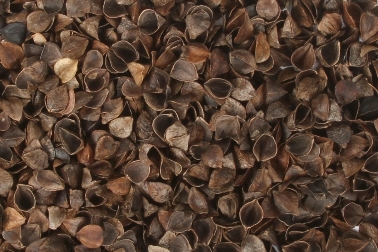When you own a small business, you have to wear a lot of hats to keep up with your responsibilities. From providing an excellent product to marketing to keeping your books straight, it can be challenging to incorporate new sustainability practices. You want your customers and clients to know that you take your environmental responsibility seriously, but you may think that adding these sustainable practices is time-intensive and expensive.
While you can't use one grand, sweeping method to make your business more environmentally friendly, you can take several small steps toward sustainability. One of these steps includes utilizing materials that would otherwise be discarded.
That's where the main character of our story comes in - meet the buckwheat hull. This little shell can be used in a variety of ways to elevate your business.
WHAT IS BUCKWHEAT, AND WHERE DID IT COME FROM?
Buckwheat is a pseudocereal, which means it is consumed like a grain, but it doesn't grow on grasses.
According to the Encyclopedia of Food Sciences and Nutrition, buckwheat originated in central and northeastern Asia. Its cultivation as a crop started in China around the fifth and sixth centuries, then moved to Europe during the Middle Ages. The fast-growing crop was brought to the United States in the 1800s and was used as a cover crop to control weed growth and improve soil health.
Now, buckwheat is widely used as an alternative grain to wheat for individuals with gluten intolerances or coeliac disease. Outside of buckwheat's use in gluten-free carbs, many are using the pseudocereal due to its higher mineral and antioxidant count than traditional grains. You can use buckwheat flour in bread, noodles, pancakes and other popular carb dishes.
While buckwheat has been an alternative to traditional grains for thousands of years, when did its less heralded shell come into play? Many cite that buckwheat hulls were used in pillows and cushions thousands of years ago, starting in ancient Egypt. Buckwheat hull pillows were popularized in the United States in the 1990s as an alternative to feather or synthetic fiber fills for pillows and upholstery.
While buckwheat hulls have been used in homes for centuries, you may still wonder how they can help your business. Stick with us to see how these little shells might be useful for your business.
1. OFFER A BETTER SEATING EXPERIENCE: USING BUCKWHEAT AS PILLOW AND CUSHION FILLING
Buckwheat hulls naturally conform to the shape of the head and body. While their primary use has been to help people sleep better, buckwheat hulls also offer comfort and support as cushions on chairs or couches. Whether you own a restaurant, run a storefront, or need a waiting area for clients, give your guests a comfortable place to sit with supportive buckwheat hull filling cushions.
Plus, pillows with buckwheat hulls are hypoallergenic. This makes them a perfect option for any customers or clients who may have sensitivity to dust and other allergens. If you're wondering "How many pounds of buckwheat hulls does it take to make a pillow?" or "How long do buckwheat hull pillows last?", then check out our step-by-step tutorial on how to make buckwheat pillows or cushions and see for yourself!

WHY BUCKWHEAT HULLS ELEVATE YOUR BUSINESS
CUSTOMERS CARE ABOUT SUSTAINABILITY
As we said at the top, consumers want to support businesses that are trying to be more sustainable. A series of studies from McKinsey and NielsenIQ explained the importance of sustainable business practices to customers.
One of the studies found that more than 60 percent of respondents said they would pay more for a product with sustainable packaging. While many business leaders showed skepticism toward this sentiment, companies that sold products with environmental, social and governance initiatives saw more significant growth than those who didn't.
When you use buckwheat hulls for filling, product packing or decor in place of other less-sustainable options, you show your customers that you are dedicated to taking care of the environment over using the cheapest possible option.

